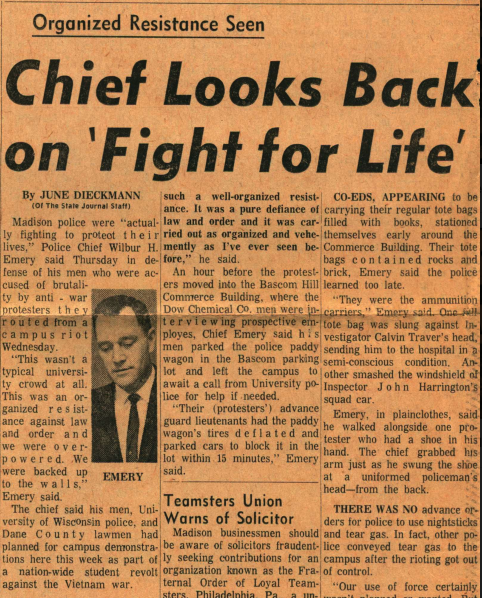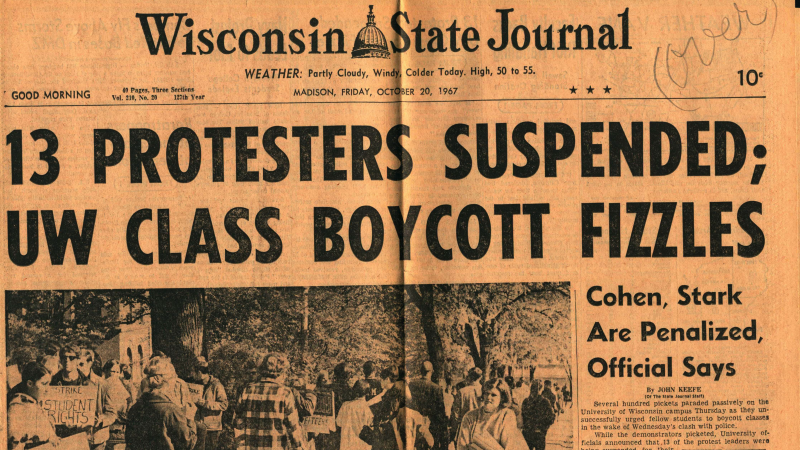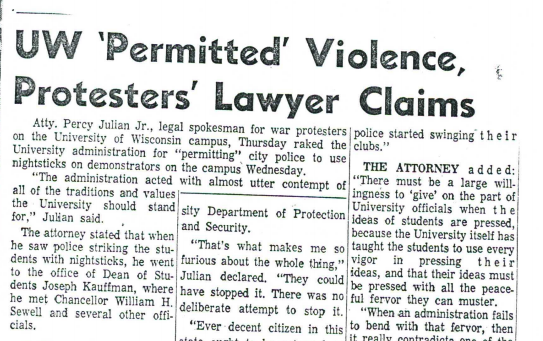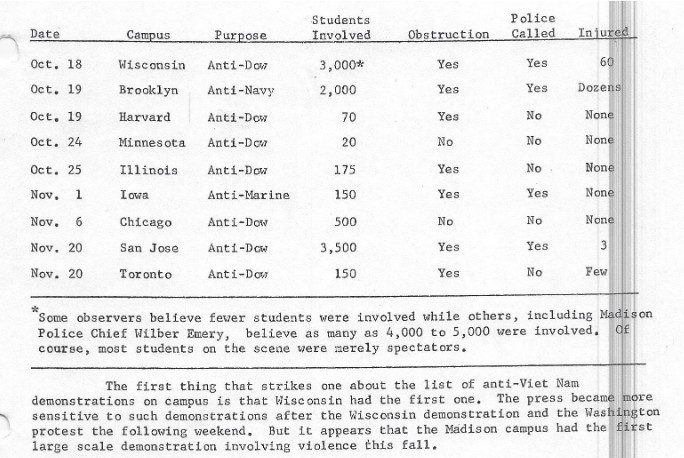"A student carrying books, perhaps on his way to or from classes, comes upon a scene of police officers attempting to handcuff a demonstrator," Wisconsin Historical Society, October 18, 1967
CONCLUSION
A month after the riots, the UW Board of Regents voted to continue job recruitments on campus.
In 2001, the US discarded the last of its napalm supply, but the Dow Chemical Protests contributed to a much bigger movement. In Madison, the protests caused Police Chief Emery to respond to incidents with more force, replaced Chancellor Sewell with Edwin “warmaker-strikebreaker” Young, and inspired a student named Paul Soglin to serve as the Mayor of Madison for 22 years. By breaking down barriers, students created an enduring culture of questioning authority and fighting for change in Madison, Wisconsin. The riots stuck out among the larger anti-war protests that happened around the country, shifting America’s political environment towards the side of the anti-war movement.
David Maraniss (Associate Editor at The Washington Post and Author) in discussion with authors, October 5, 2019
“To find a comment from Police Chief Emery [saying] ‘I will never be outgunned or outmanned again, we will always respond with overwhelming force’ that was a revelation, that explained a lot of his actions over the next four to five years.” ~ Stu Levitan (Historian) in discussion with authors, Interview, January 5, 2020




